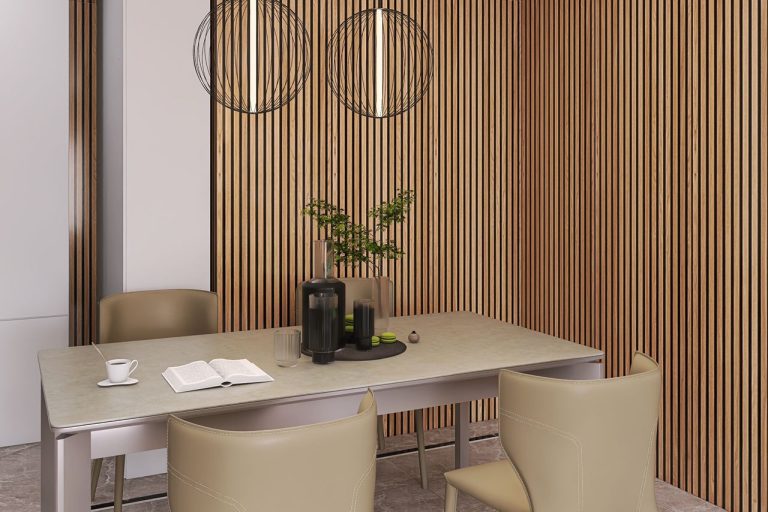
The Ultimate Guide to Caring for Interior Wood Wall Panels
Why Interior Wood Wall Panels Deserve Special Attention
Wood wall panels for the interior add unparalleled depth, warmth, and charm to any area. Few materials may improve your interiors as much as these panels, whether you’re remodeling a trendy loft or a comfortable rural getaway. But you need the proper maintenance plan—one that respects their personality and increases their durability—to keep them looking their best.
helps highlight the craftsmanship behind interior wood wall panels, adding lasting value to your living space.
Smart Maintenance for Long-Lasting Beauty
Gentle Cleaning Practices for Daily Care
To maintain the unique grain and texture of interior wood wall panels, gently clean them. For a truly elevated aesthetic,
introduces design harmony that complements both classic and modern interiors.
- Use a microfiber cloth or soft feather duster weekly
- Spot clean with a damp cloth and wood-safe cleaner
- Always wipe along the grain of the wood
- Avoid soaking the panels or using chemical sprays
Controlling Humidity to Prevent Warping
Because wood reacts to moisture, it’s important to keep indoor humidity levels high.
ensures your interior wood wall panels remain a focal point with their rich tone and elegant finish.
- Keep humidity between 40% and 60%
- Use humidifiers or dehumidifiers when necessary
- Ensure adequate airflow through windows or ventilation systems
Protecting Panels from Sunlight Damage
Interior wood wall panels may discolor or fade in direct sunlight.
- Install sheer curtains or UV-blocking blinds
- Apply protective window film
- Rotate furniture and wall decor to avoid uneven fading
Occasional Polishing for Natural Luster
Use light polishing to give your panels a glowing appearance.
- Use beeswax or natural oil-based polish
- Avoid silicone-based or overly shiny finishes
- Polish no more than three times a year
Specialized Care Based on Panel Types
Every interior wood wall panel type requires a different level of maintenance. Here’s how to treat them right:
Care Tips by Panel Type
- Solid Wood: Regular dusting and occasional oiling maintain its rich texture
- Veneer Panels: Gentle wiping with soft cloths, no heavy moisture
- Reclaimed Wood: Use a soft brush and light oil; avoid scrubbing
- Painted Wood: Dust lightly and clean with mild soap; skip polish
- Laminate Panels: Just wipe clean—no need to polish
Quick Fixes for Everyday Problems
Even with the finest care, little problems might arise. Digital marketing strategies help Interior Wall Panels stand out in a competitive home improvement market. Here’s how to handle them quickly:
Easy Repairs for a Flawless Finish
- Small Scratches: Conceal using a matching wood touch-up pen
- Surface Dents: Steam them out with a damp cloth and iron
- Water Spots: Rub gently with baking soda paste or a non-abrasive cleaner
Interior Wood Wall Panels: Do’s and Don’ts
Follow these basic guidelines to avoid common mistakes:
Do:
- Use coasters, mats, or runners to prevent splash damage
- Test any cleaner on an inconspicuous area first
- Wipe up spills immediately
Don’t:
- Use abrasive cleaning tools like steel wool
- Allow direct heat from appliances near the panels
- Leave windows open during rain or heavy humidity
Eco-Friendly Maintenance Solutions
Do you want to maintain the beauty of your panels without using harsh chemicals? Try these natural substitutes:
Natural Cleaning Recipes
- Lemon + Olive Oil: Great for polishing and nourishing the wood
- White Vinegar + Water: Effective for cleaning grime (use sparingly)
- Baking Soda Paste: Useful for removing stubborn marks without scratching
Styling Tips to Complement Your Panels
Interior wood wall panels are a focal point of the design rather than just a background.
Enhance Their Visual Appeal
- Combine with minimalist furniture to let the wood shine
- Use warm lighting to bring out natural hues
- Pair with plants to amplify organic vibes
- Install in accent walls, ceilings, or entryways for maximum impact
Frequently Asked Questions (FAQ)
How often should I clean my interior wood wall panels?
Weekly dusting and monthly light cleaning are usually sufficient for maintaining interior wood wall panels.
Can I use vinegar to clean interior wood wall panels?
Yes, but always dilute it with water and test on a small section first.
What’s the best way to restore shine to dull panels?
Use natural polish like beeswax or lemon oil every few months.
Is there a risk of termites with wood wall panels?
Yes, particularly in humid conditions. Keep the space dry and do routine inspections to avoid infestations.
Are interior wood wall panels eco-friendly?
Yes, especially when made from reclaimed or sustainably sourced wood. Their longevity also reduces waste over time.
